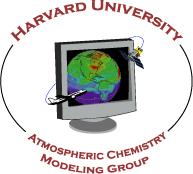|
||||||
|
||||||
 |
||||||
|
|
|||||||||||||||||||||
|
Our research goal is to understand precursor emissions, chemical processes,
and transport that determine the global distributions of tropospheric ozone and aerosols, and to characterize the influence of global
climate and chemical change on regional air quality and the effects of regional pollution on the global atmosphere. We work on global
3-dimensional modeling and analysis of satellite, aircraft, and ground observations. The model that we use is the GEOS-CHEM global 3-D
model of tropospheric chemistry-aerosols. At JPL, we work closely with satellite instrument teams TES, MLS, MISR, and AIRS. | |||||||||||||||||||||
 TES
TESLaunch: July 15, 2004 This instrument, which flies aboard NASA's Aura spacecraft, is an infrared sensor designed to study Earth's troposphere and look at ozone. |
 MLS
MLSLaunch: July 15, 2004 This instrument, which flies aboard NASA's Aura spacecraft, is designed to improve our understanding of ozone, especially how it is depleted by processes of chlorine chemistry. |
|||
 MISR
MISRLaunch: December 18, 1999 Carried onboard NASA's Terra satellite, this instrument is a sophisticated imaging system that collects images from nine widely spaced angles as it glides above Earth. |
 AIRS
AIRSLaunch: May 4, 2004 This instrument flies aboard NASA's Aqua satellite to make highly accurate measurements of air temperature, humidity, clouds and surface temperatures. |
|||
 GEOS-CHEM
GEOS-CHEMThe GEOS–CHEM model is a global three-dimensional model of atmospheric composition driven by assimilated meteorological observations from the Goddard Earth Observing System (GEOS) of the NASA Global Modeling and Assimilation Office. |
||||
|
||||||